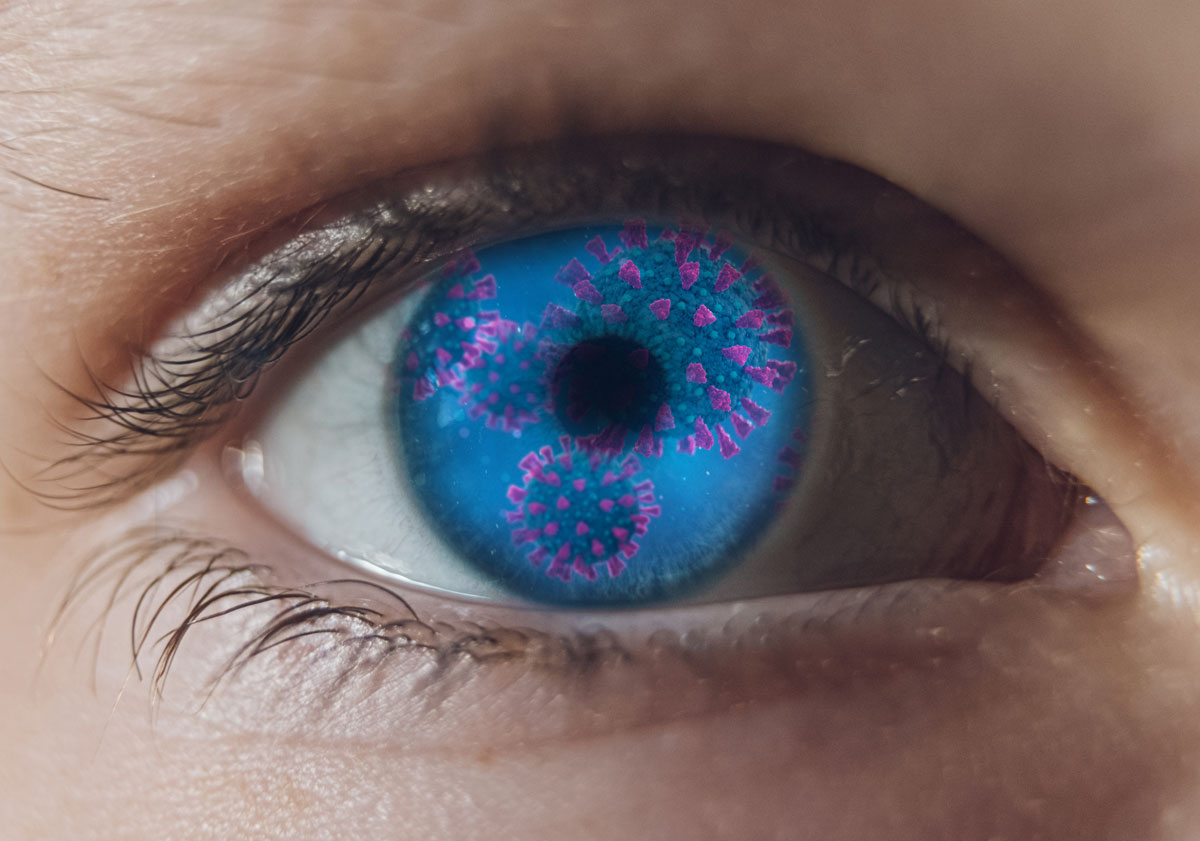 |
| COVID-19 patients' corneas resemble those of DED and diabetic patients, study shows. |
To date, there has been no published evidence of sensory alterations in the cornea after Sars-CoV-2 virus infection. Researchers in Spain recently used in vivo confocal microscopy (IVCM) to evaluate the morphological changes in the sensory subbasal plexus of the cornea after Sars-CoV-2 infection. They discovered that morphological alterations in corneas of COVID-19 patients are similar to those in diabetic corneas and dry eye disease (DED) and are accompanied by functional loss and alteration in sensitivity.
The observational, retrospective study recruited 23 patients who had overcome COVID-19. The control group consisted of 46 uninfected volunteers. The researchers used IVCM to obtain images of corneal subbasal nerve fibers and study the presence of neuroma-like structures, axonal beadings and dendritic cells. The study used the Ocular Surface Disease Index (OSDI) questionnaire and Schirmer tear test as indicators of DED and ocular surface pathology.
The researchers found alterations of the corneal subbasal plexus and corneal tissue consistent with small fiber neuropathy in 21 patients (91.31%). Eight patients reported increased sensation of ocular dryness after COVID-19 infection and had positive DED indicators. The study also found beaded axons in 82.60% of cases, mainly in patients reporting ocular irritation.
Neuroma-like images were found in 65.22% patients, more frequently in those with OSDI scores greater than 13. Dendritic cells were found in 69.56% of patients and were more frequent in younger asymptomatic patients. The researchers believe the presence of morphological alterations in patients up to 10 months after recovering from Sars-CoV-2 infection points to the chronic nature of the neuropathy.
“Our results demonstrate morphological changes in subbasal nerves of the COVID-19 group associated with the generation of DED symptoms,” the researchers wrote. “The severity of morphological changes was related with worsening of DED symptoms: discomfort, irritation and mild pain.”
The researchers also concluded that their results add new evidence for the use of IVCM technology in the diagnosis and follow-up COVID-19 and associated complications, as well as in the study of small fiber neuropathies.
Barros A, Queiruga-Piñeiro J, Lozano-Sanroma J. Small fiber neuropathy in the cornea of Covid-19 patients associated with the generation of ocular surface disease. Ocul Surf. 2021;23:40-48. |

